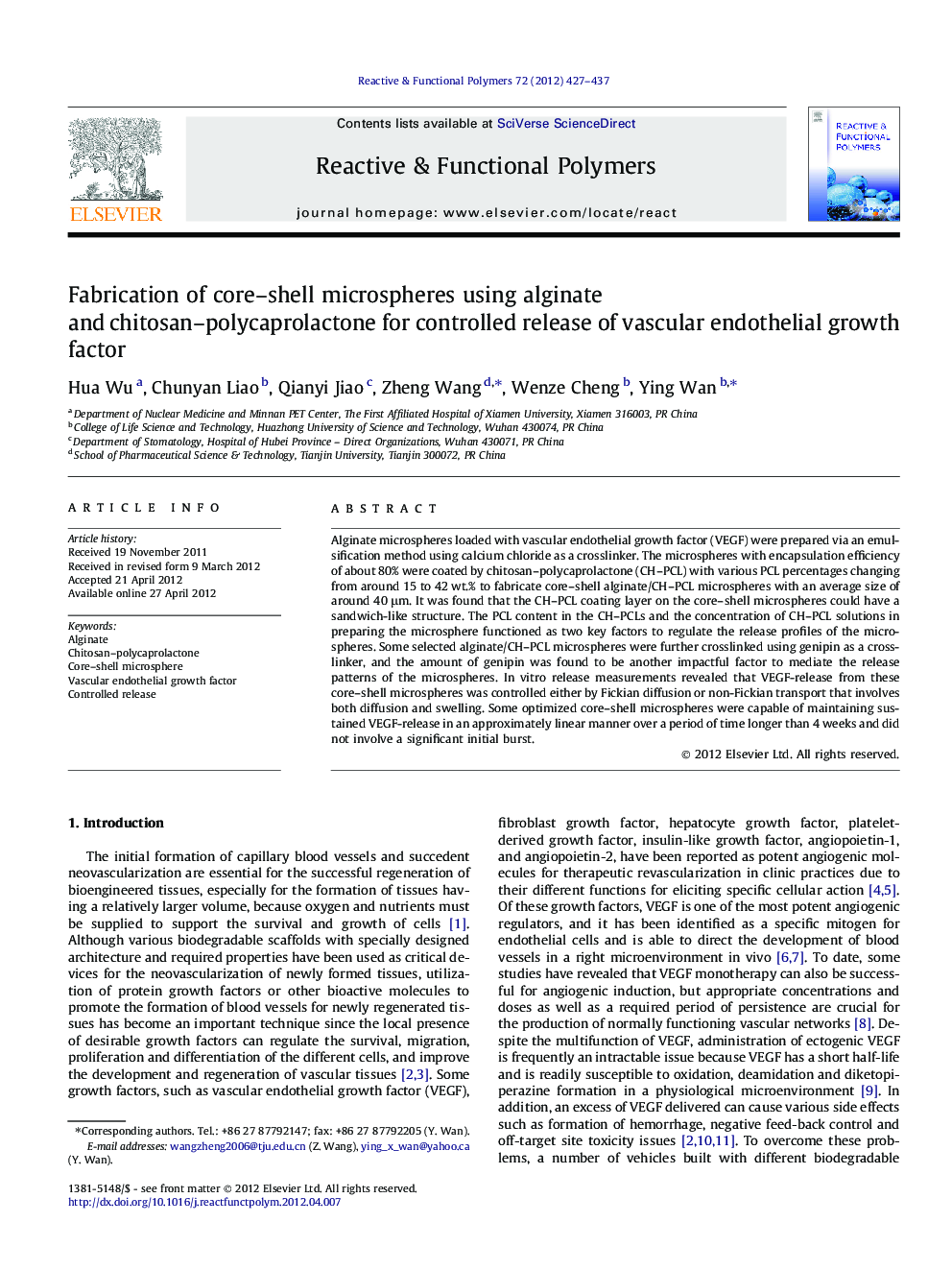| Article ID | Journal | Published Year | Pages | File Type |
|---|---|---|---|---|
| 5210334 | Reactive and Functional Polymers | 2012 | 11 Pages |
Abstract
Alginate microspheres loaded with vascular endothelial growth factor (VEGF) were prepared via an emulsification method using calcium chloride as a crosslinker. The microspheres with encapsulation efficiency of about 80% were coated by chitosan-polycaprolactone (CH-PCL) with various PCL percentages changing from around 15 to 42 wt.% to fabricate core-shell alginate/CH-PCL microspheres with an average size of around 40 μm. It was found that the CH-PCL coating layer on the core-shell microspheres could have a sandwich-like structure. The PCL content in the CH-PCLs and the concentration of CH-PCL solutions in preparing the microsphere functioned as two key factors to regulate the release profiles of the microspheres. Some selected alginate/CH-PCL microspheres were further crosslinked using genipin as a crosslinker, and the amount of genipin was found to be another impactful factor to mediate the release patterns of the microspheres. In vitro release measurements revealed that VEGF-release from these core-shell microspheres was controlled either by Fickian diffusion or non-Fickian transport that involves both diffusion and swelling. Some optimized core-shell microspheres were capable of maintaining sustained VEGF-release in an approximately linear manner over a period of time longer than 4 weeks and did not involve a significant initial burst.
Related Topics
Physical Sciences and Engineering
Chemistry
Organic Chemistry
Authors
Hua Wu, Chunyan Liao, Qianyi Jiao, Zheng Wang, Wenze Cheng, Ying Wan,
